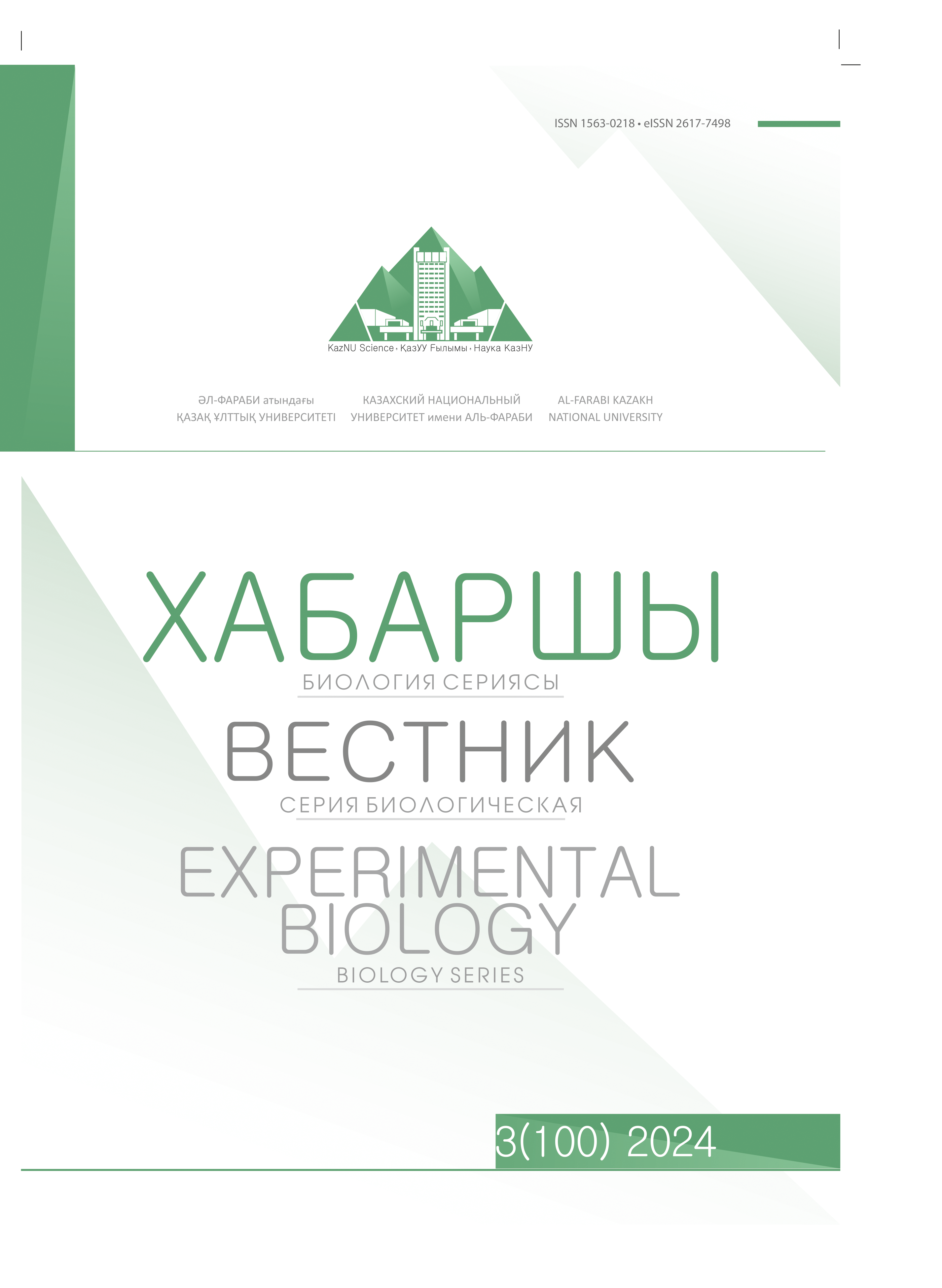HOMEOSTATIC AND OXIDATIVE BLOOD PARAMETERS IN AN IMMATURE ORGANISM AFTER ACUTE HYPOXIA
DOI:
https://doi.org/10.26577/bb.2024.v100.i3.013Keywords:
immature organism, hypoxia, physical activity, blood, homeostasis, adaptationAbstract
The article presents data on changes in the most important constants (pH, glucose, hemoglobin) and oxidative blood parameters in immature rabbits after acute hypoxia and physical activity separately, as well as their consistent use. Experiments have shown that the pH of blood in animals shifts to a slightly acidic region an hour after 20 minutes of hypoxia (5%O2+95%N2). Physical activity immediately after hypoxia leads to a shift in pH to an even more acidic area and delays recovery to control in the slightly alkaline zone. The blood glucose level after acute hypoxia shows a hyperglycemic effect. Physical activity after hypoxia has practically no effect on the dynamics of blood glucose levels, although intact animals have some hypoglycemic effect after running. Blood hemoglobin in immature rabbits undergoes phase changes after acute hypoxia, which manifests itself in a significant initial decrease and over-recovery in the next period. Physical activity applied to rabbits after hypoxic exercise did not reveal significant changes in the dynamics of hemoglobin content in the blood, despite the fact that intact animals respond to physical activity with an initial increase in hemoglobin levels. All these reactions at the homeostatic blood level indicate compensatory and adaptive processes in organism of an immature animal in response to the action of an extreme factor, hypoxia. The study of the effect of acute hypoxic stress has revealed changes in the state of free radical oxidation in blood. It has been shown that acute hypoxia leads to an increase in the process of lipid peroxidation and activation of the antioxidant system of the blood. In the posthypoxic period (within 6 hours after the presentation of hypoxia), there is an increase in the content of the lipid peroxidation product malondialdehyde, both in serum and red blood cells; in serum, this indicator stabilizes at a level exceeding the control level by 40%, while in erythrocytes, continued growth is observed. These changes occur against the background of increased activity of the antioxidant enzyme superoxide dismutase (SOD) in serum and erythrocytes, which appears as an urgent adaptive reaction to the oxidative effect of hypoxia. In order to assess the adaptive potential of the redox system of the blood to the action of hypoxia, the effect of physical activity, as a factor increasing the body's oxygen consumption, on the antioxidant activity of blood serum in animals exposed to acute hypoxia was studied. Data on changes in the activity of SOD and total antioxidant activity indicate that in the region of 3-6 hours after the consistent presentation of acute hypoxia and physical exertion, some instability appears in the oxidant-antioxidant system of the blood in an immature organism. It is concluded that although the most important homeostatic blood parameters, such as glucose, lactate, hemoglobin, and blood pH, respond to the temporary restriction of oxygen supply by changes in physiological ranges, however, the instability found in the free radical blood system introduces probable ambiguity into the homeostatic equilibrium of the blood system due to endogenous resources under the action of adverse factors. Perhaps, after a certain critical time, exogenous agents in the form of antioxidants, antihypoxants may be needed.












